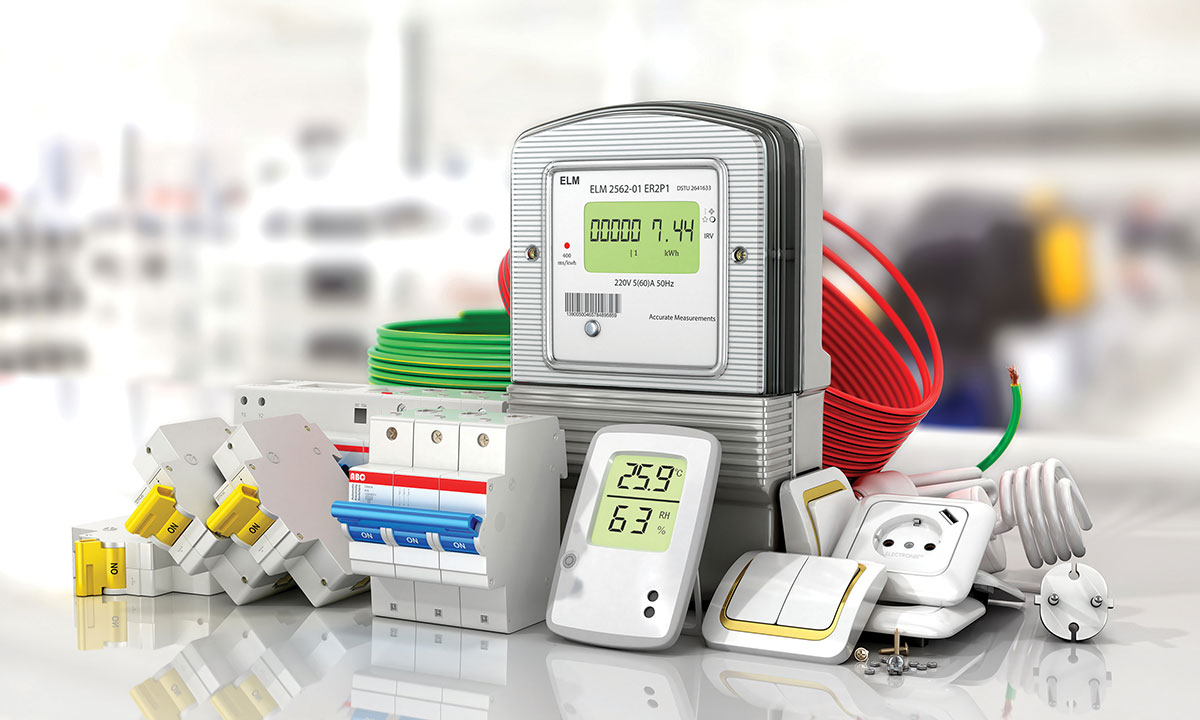Recently the National Fire Protection Association announced that their board of directors had taken a historic step in voting unanimously to pursue the development of NFPA 5000, NFPA Building Code. What makes this standard different from other building codes is that NFPA 5000 will be the first building code to be developed using the ANSI open consensus process. In making their decision, the board of directors reasoned that this code would round out and complete the NFPA set of codes. Robert Solomon, NFPA’s chief building fire protection engineer stated, “NFPA codes and standards directly related to the built environment are widely referenced right now,” says Solomon. These include NFPA 101, Life Safety Code, and NFPA 70, National Electrical Code. “We have expertise in all of these, and they make the NFPA set complete.” It is not surprising Mr. Solomon chose to single out NFPA 70, National Electrical Code (NEC). The NEC is regarded the “blueprint for electrical safety throughout the world” and it is the most widely used and adopted code for electrical installations.
Far too many users of the NEC fail to utilize the other electrical standards that augment and round out, if you will, NFPA’s electrical codes and standards. The purpose of this article will be to review the NFPA “70″ series of electrical codes and standards and discuss the benefits of integrating these standards from the onset of the building design to maintenance and reinspection.
NFPA “70″ Series of Electrical Documents
The NFPA “70″ Series consists of eight documents as follows:
1. NFPA 70, National Electrical Code
2. NFPA70B Recommended Practice for Electrical Equipment Maintenance
3. NFPA 70E Standard for Electrical Safety Requirements for Employee Workplaces.
4. NFPA 72 National Fire Alarm Code
5. NFPA 73 Electrical Inspection Code for Existing Dwellings
6. NFPA 75 Standard for the Protection of Electronic Computer/Data Processing Equipment.
7. NFPA 77 Recommended Practice on Static Electricity
8. NFPA 79 Electrical Standard for Industrial Machinery
Note that some of these documents are “codes,” some are “standards,” and others are a “recommended practice.” The Manual of Style for NFPA Technical Documents contains information on the proper classification of each document. Essentially, the primary difference is that the text of codes and standards can only contain mandatory requirements while the text of a recommended practice can consist of only recommendations. Some NFPA documents are “guides.” Guides are permitted to mix recommendations and explanatory information within the body of the text.
NFPA 70 National Electrical Code
As stated, the National Electrical Code is the most widely-accepted and adopted electrical code in the world. Fittingly, the NEC is the foundation of the NFPA 70 series of electrical documents. The purpose of the NEC as stated in Section 90-1(a) is “the practical safeguarding of persons and property from hazards arising from the use of electricity.” Towards that end, Section 90-2(a) details all of the types of installations that are covered by the NEC and Section 90-2(b) lists those that are exempt from the NEC.
NFPA 70B Recommended Practice for Electrical Equipment Maintenance
The stated purpose of NFPA 70B in Section 1-1 is “to reduce hazards to life and property that can result from failure or malfunction of industrial-type electrical systems and equipment.” As a recommended practice it is intended to provide guidelines and information for the implementation of an effective electrical preventive maintenance program. The scope is “confined to preventive maintenance for industrial-type electrical systems and equipment and is not intended to duplicate or supersede instructions that electrical manufacturers normally provide.”
NFPA 70E Standard for Electrical Safety Requirements for Employee Workplaces
NFPA 70E is intended to address “those electrical safety requirements for employee workplaces that are necessary for the practical safeguarding of employees in their pursuit of gainful employment.” Section 1-1 and 1-2 of Part 1 lists those applications, which are covered and exempt from NFPA70E. NFPA 70E consists of four parts containing provisions for: Installation Safety Requirements, Safety-Related Work Practices, Safety-Related Maintenance Requirements, and Safety Requirements for Special Equipment.
NFPA 72 National Fire Alarm Code
The purpose of National Fire Alarm Code as stated in Section 1-2.1 is to “define the means of signal initiation, transmission, notification, and annunciation; the levels of performance; and the reliability of the various types of fire alarm systems.” The National Fire Alarm Code establishes the “required levels of performance, extent of redundancy, and quality of installation” but it is not intended to address the methods by which these requirements are to be achieved. The scope of this code is clearly stated in Section 1-1 to cover the “application, installation, location, performance, and maintenance of fire alarm systems and their components.”
NFPA 73 Electrical Inspection Code for Existing Dwellings
NFPA 73 is somewhat different from other NFPA codes and standards in that its purpose is to provide requirements for “evaluating installed electrical systems within and associated with existing dwellings to identify safety, fire, and shock hazards, such as improper installations, overheating, physical deterioration, abuse, and similar conditions.” Towards this end the scope extends only to “accessible electrical equipment and those portions of the electrical system that are accessible without removing any permanent part of the building structure or finish of existing one-family, two-family, and multifamily dwellings, including mobile homes and manufactured homes.”
NFPA 75 Standard for the Protection of Electronic Computer/Data Processing Equipment
NFPA 75 has long been recognized as a valuable standard intended to “set forth the minimum requirements for the protection of electronic computer/data processing equipment and computer areas from damage by fire or its associated effects—namely, smoke, corrosion, heat, and water.” While the standard covers the requirements for the protection of electronic computer/data processing equipment and computer areas, it is only intended to cover computer and data processing equipment where the threat of fire or other life safety concerns to occupants are significant or where there may be serious economic impact from loss or damage to the equipment.
NFPA 77 Recommended Practice on Static Electricity
The origins of NFPA 77 date back to the 1930s. The document is intended to “assist the user in controlling the hazards associated with the generation, accumulation, and discharge of static electricity.” This is accomplished by providing a framework for discussing what static electricity is, what hazards it presents and how best they can be controlled. The scope of the recommended practice is limited to the “identification, assessment, and control of static electricity for purposes of preventing fires and explosions.”
Electrical Standard for Industrial Machinery
NFPA 79 is intended to provide “detailed information for the application of electrical/electronic equipment, apparatus, or systems supplied as part of industrial machines that will promote safety to life and property.” Its scope is limited to “electrical/electronic equipment, apparatus, or systems of industrial machines operating from a nominal voltage of 600 volts or less, and commencing at the place of connection of the supply to the electrical equipment of the machine.” The scope of the standard specifically excludes fixed or portable tools judged under the requirements of a testing laboratory acceptable to the authority having jurisdiction and machines used in dwelling units.
Analysis
Taken together these eight electrical documents provide the basis for a complete set of electrical codes, which can be utilized beginning from the design stage of an electrical project. Most importantly, these documents can continue to provide valuable insight long after the completion of the project well into the maintenance and re-inspection of the installed electrical system. How can this best be accomplished?
Too often, the NFPA 70 series of electrical documents, other than the NEC itself, are under-utilized or simply forgotten by those responsible for designing, inspecting, and maintaining electrical systems. This is unfortunate because, as shown above, each of the documents has a specific purpose and scope, which is far different than what the NEC is intended to provide. Make no mistake, however, the NEC is, and ought to remain, the foundation of the NFPA “70″ series of electrical documents. End users are very familiar with the NEC and its purpose. The other electrical documents, however, seem to be less available and perhaps are not fully understood within the context of the electrical system. The NEC could be the vehicle to gaining a better understanding of these other electrical documents and could become the basis for use of these other codes and standards. How so?
NFPA 79: A Model
Not unlike other industry standards, the origins of the Electrical Standard for Industrial Machinery can be traced to the period during Second World War. The roots of the present day NFPA 79 can be found in a 1941 machine tool industry electrical standard developed to make machine tools “safer to operate, more productive, less costly to maintain, and to improve the quality and performance of their electrical components.” As NFPA does so efficiently, it recognized the needs of the machine tool industry, gathered expertise to enhance and embellish the original electrical machinery standard, and provided a consensus basis for the new standard. The result was that on August 4, 1942, a Tentative Interim Amendment was created and later appeared in the 1943 supplement to the 1940 edition of the National Electrical Code as a new Article 670, “Machine Tools.” Over the next 20 years Article 670 was revised to better reflect the needs and problems specific to machine tools. Then, under the direction of the technical correlating committee, a separate standard was created to more closely and specifically address issues not necessary in the NEC but essential to the machine tool industry.
The importance of reviewing the history of NFPA 79 is to discover the means by which a link was created, or in other words, how the integration of the machine tool standard occurred with the NEC. It was by design that the original standard found its place in Article 670 of the NEC. And it is by design that today NFPA 79 stands as a separate standard but retains a valuable link to the NEC. Most importantly, the link is bi-directional.
For example, Section 1.1.4 of NFPA 79 states that “[T]he size and overcurrent protection of the supply conductors to a machine are covered by NFPA 70, Article 670. The wiring between component machines of an industrial manufacturing system is covered by NFPA 70.” In addition, Section 1.1.5 clearly demonstrates the unbreakable link between the documents: “(O)n any point for which specific provisions are not made in this standard (e.g., some requirements for the application of Design E motors), the provisions of NFPA 70 shall be observed.”
Likewise, Section 670-1 of the NEC states, “[T]his article covers the definition of, the nameplate data for, and the size and overcurrent protection of supply conductors to industrial machinery.” The section is immediately followed by a Fine Print Note, which references NFPA 79 for additional information. It is important to note that the NEC reference is only to specific provisions that work within the context of the NEC. In the case of industrial machinery, the NEC is only concerned with installation requirements for supplying the machinery, so Article 670 only addresses the size and overcurrent protection of the supply conductors and the nameplate data of the machinery, which is essential for proper installation of the supply conductors.
Conclusion
There is no doubt that the NEC is a complex electrical standard. Yet it maintains a basic simplicity that is well suited to a role as a foundational standard that links other electrical documents together. Using NFPA 79 as a model, other NFPA electrical documents can be integrated more fully for end users of the NFPA 70 series of electrical codes and standards. For example, Section 90-1(b) is an often overlooked provision which states that the “Code contains provisions that are considered necessary for safety. Compliance therewith and proper maintenance will result in an installation that is essentially free from hazard but not necessarily efficient, convenient, or adequate for good service or future expansion of electrical use.” In this case the NEC merely acknowledges the importance of proper maintenance of electrical systems and the necessity for safe work practices when working on or near electrical equipment. NFPA 70B, Recommended Practice for Electrical Equipment Maintenance, as we have seen is designed to reduce hazards to life and property that can result from failure or malfunction of industrial-type electrical systems and equipment. Wouldn’t appropriate cross-reference and links from NFPA 70B to the NEC be valuable? For example, Article 450 covers the requirements for transformers. Chapter 7 of NFPA 70B covers Power and Distribution Transformers. Chapter 7 contains detailed information on the proper methods for servicing, maintaining and testing both liquid-filled and dry type transformers. As we have seen with NFPA 79, not all of NFPA 79 is appropriate for inclusion in the NEC. Likewise only those provisions of NFPA 70B, which could suitably take on mandatory language, should be included in the NEC. We could take this example a step further. When some type of maintenance work was deemed necessary on a transformer, NFPA 70E, Standard for Electrical Safety Requirements for Employee Workplaces, could be reviewed to determine the work practices and proper necessary precautions, including personal protective equipment, that should be utilized by maintenance personnel who may be asked to work on or near the transformer while it is in an energized state. The NEC is designed such that better integration of the electrical codes is both practical and beneficial to the users of the Code.
Too often, end users reach for the NEC and fail to utilize the full set of companion electrical documents that are at their disposal. This is both unfortunate and correctable. We can learn a lesson from the current efforts to develop and implement a complete set of building codes in NFPA 5000. A similar effort to fully integrate the existing electrical standards is worthy of consideration.
Since its inception, NFPA has stood firmly with all segments of the electrical industry that have sought to improve and define the necessary codes, standards and practices to move their industry forward in an safe and efficient manner. NFPA has provided a solid foundation upon which the NFPA 70 series of electrical documents can serve the needs of all end-users. As we begin the new millennium, the challenge that faces us is better integration of these documents to enhance the safety of all persons from the hazards associated with electrical installations and equipment.










Find Us on Socials